D- Continuity and Change
1- Molecules: DNA Replication, Protein Synthesis, and Mutations and gene editing
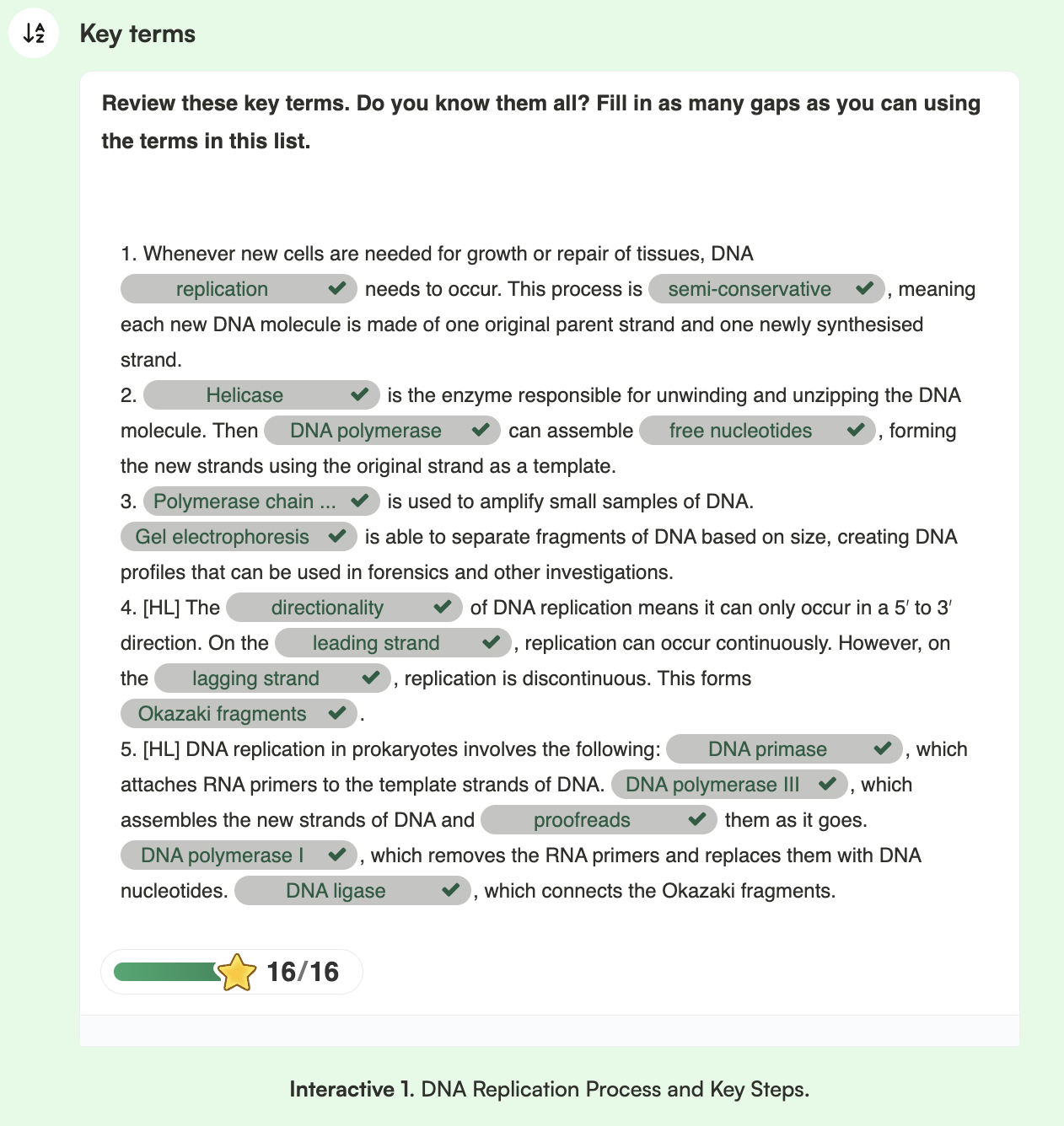
DNA replication happens when new cells form (for growth or repair).
It makes exact copies of the DNA sequence.
DNA replication is semi-conservative:
Each new DNA has one old strand and one new strand.
Key enzymes:
Helicase: unzips the DNA by breaking hydrogen bonds.
DNA polymerase: builds new strands using base-pairing rules (A-T, C-G).
PCR (Polymerase Chain Reaction):
Used to amplify small amounts of DNA.
Involves thermal cycling:
Denature (separate strands)
Anneal (attach primers)
Extend (build new strands)
Produces millions of DNA copies in hours.
Gel electrophoresis:
Separates DNA fragments by size.
Used to compare DNA samples, e.g., in forensics.
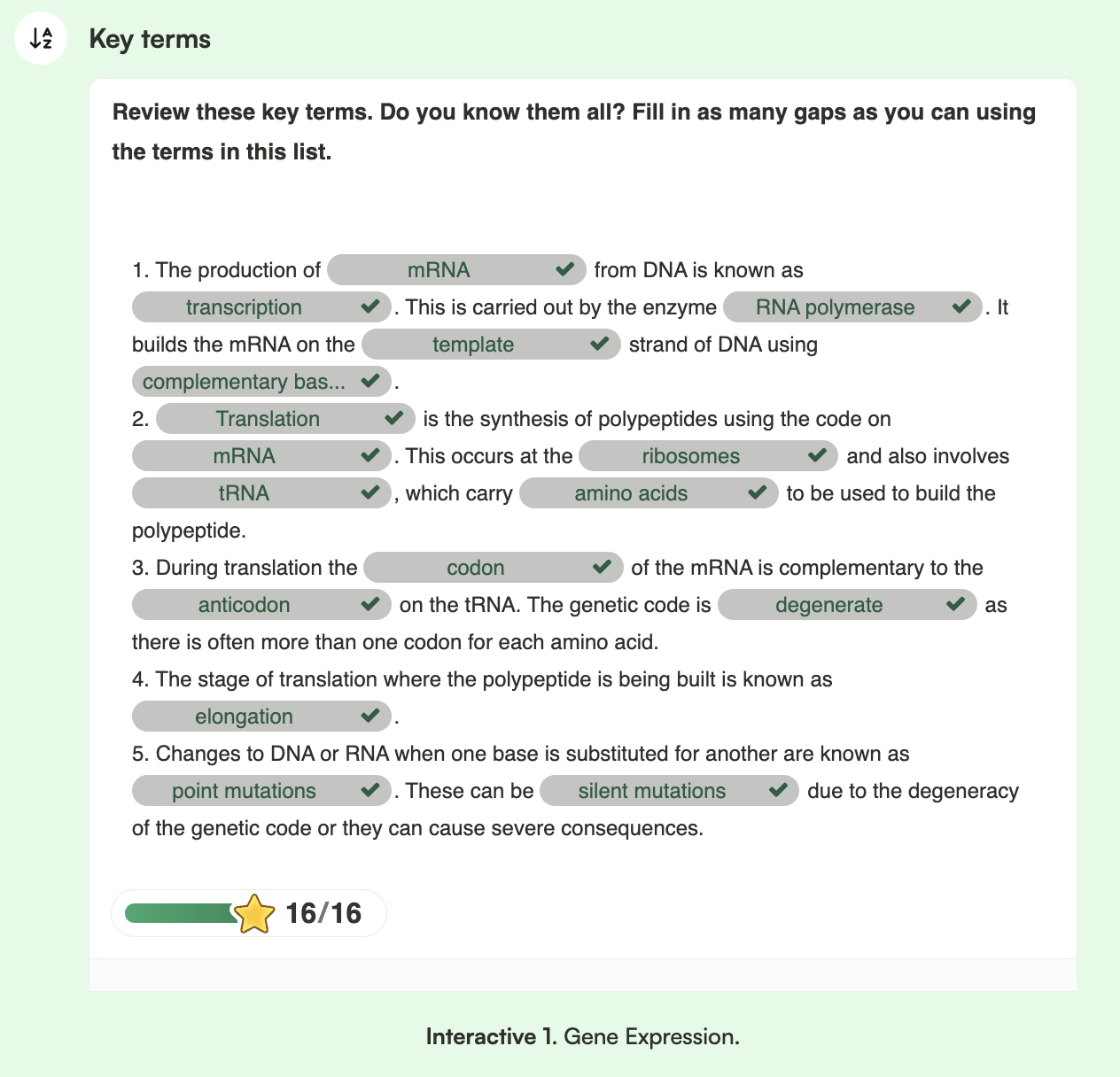
Step 1: Transcription
RNA polymerase unzips the DNA and builds a strand of mRNA.
Base pairing: A–U (in RNA), T–A, C–G, G–C.
The DNA stays unchanged and can be reused.
Gene expression is controlled by whether a gene is transcribed or not.
Step 2: Translation
Happens at a ribosome using the mRNA.
tRNA molecules bring amino acids to match the codons (three-base sequences) on the mRNA.
Each codon matches an anticodon on a tRNA.
The genetic code:
Made of 64 codons but only 20 amino acids → code is degenerate (multiple codons for the same amino acid).
It is universal across nearly all living organisms.
Elongation: main stage of translation.
Ribosome moves along mRNA one codon at a time.
New tRNAs enter, amino acids are added, and peptide bonds form between them.
Point mutations: one base is changed in DNA/RNA.
Effects range from no change to serious errors in the resulting protein.
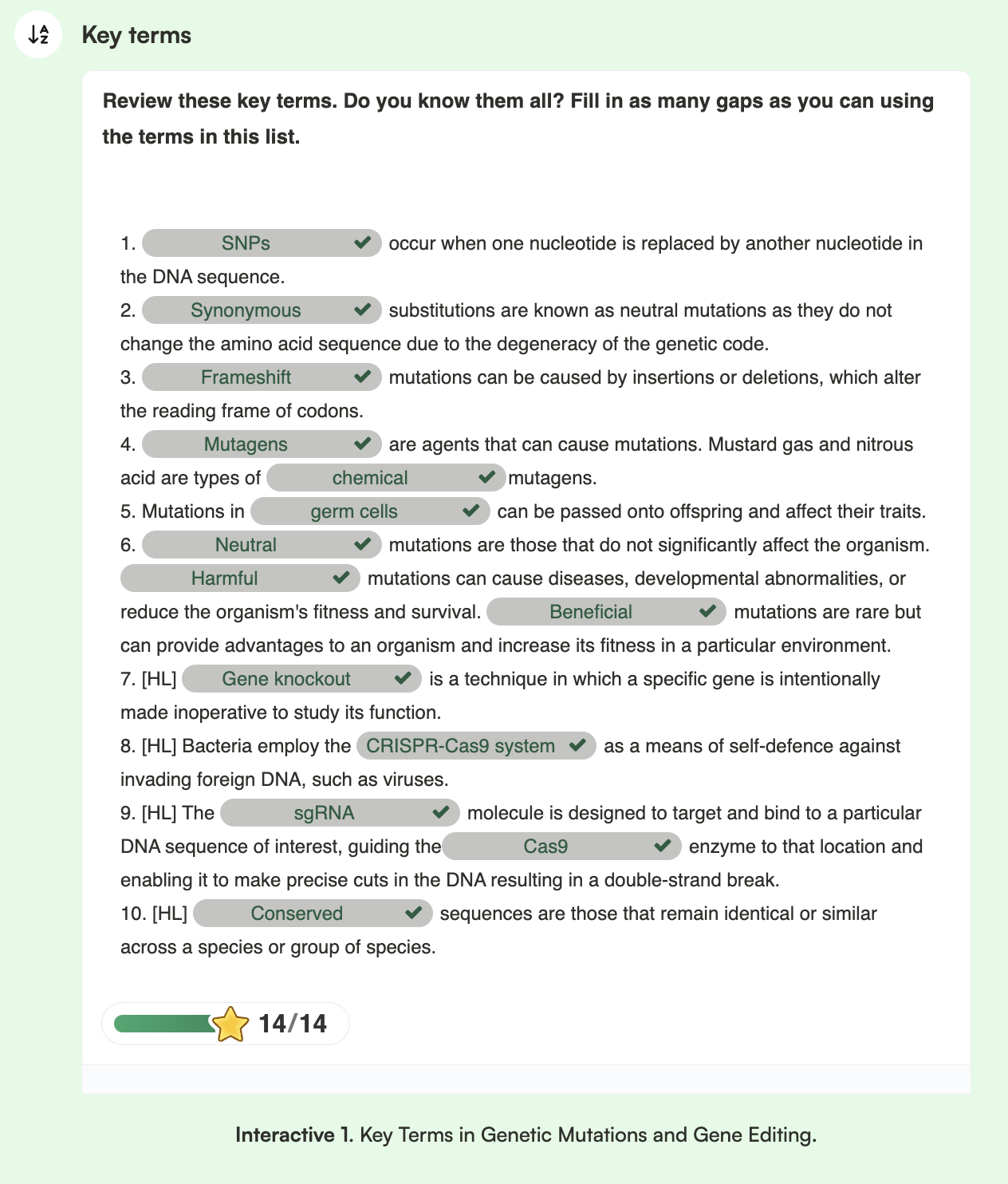
SNPs (Single-Nucleotide Polymorphisms):
One base is replaced by another.
Synonymous (neutral): no change in amino acid (due to code degeneracy).
Nonsynonymous: changes amino acid → may affect protein function.
Frameshift mutations:
Caused by insertions or deletions of bases.
Changes the reading frame, altering the whole amino acid sequence.
Insertions = adding nucleotides
Deletions = removing nucleotides
Gene mutation = any change in a gene’s DNA sequence.
Can lead to altered proteins and sometimes disease.
Caused by errors in replication or repair, or by mutagens:
Chemical mutagens
Radiation
Mutations are random, though some areas are more likely to mutate.
There is no natural way to target a specific base to change a trait.
Mutations are the source of genetic variation.
If they occur in germ cells, they can be inherited.
If in somatic cells, they only affect the individual.
Effects of mutations:
Neutral – no impact
Harmful – may cause disease
Beneficial – rare, but can improve survival or reproduction
2- Cells: Cell and Nuclear division, and water potential
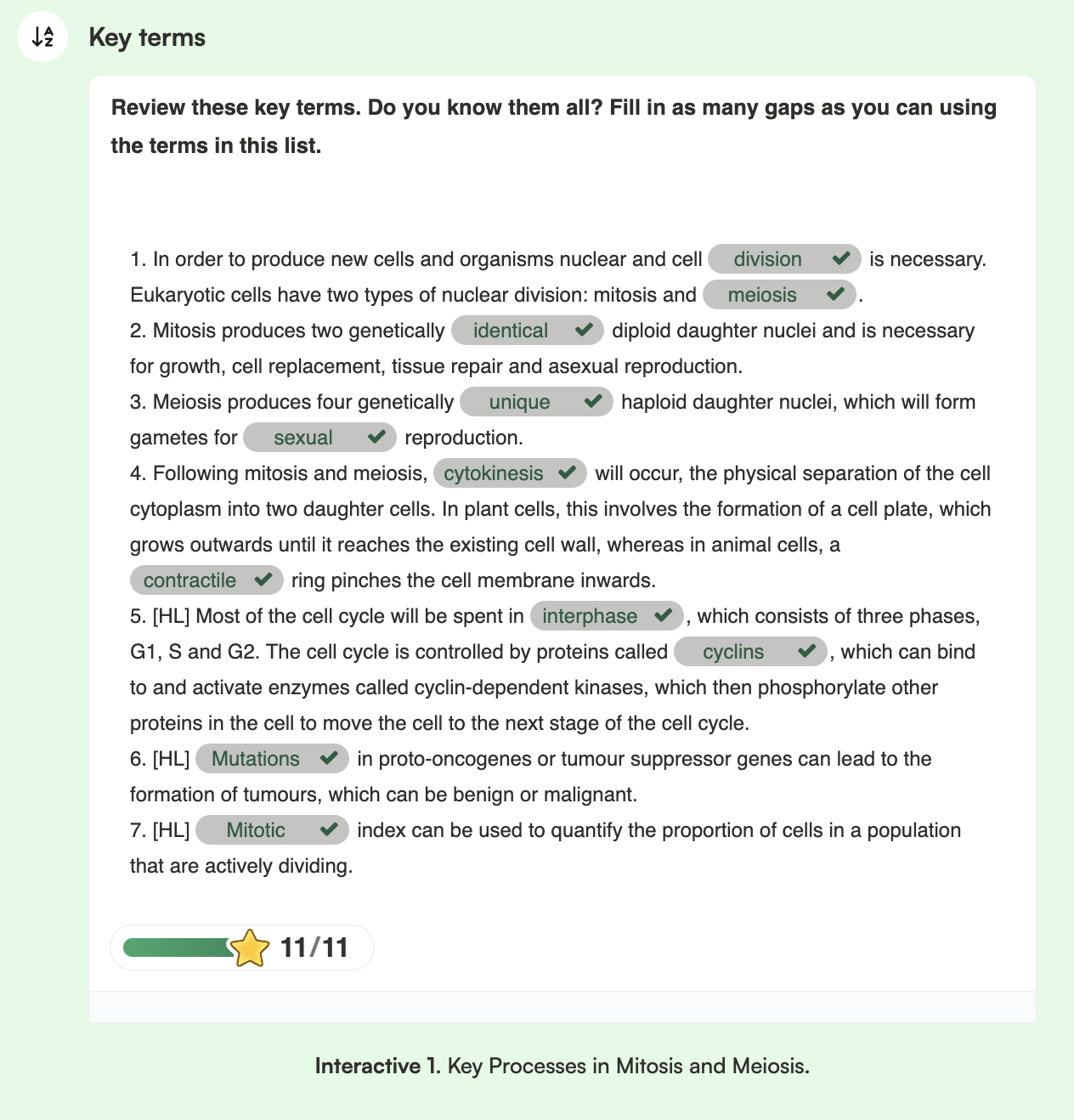
Cytokinesis
Cytokinesis is when the cell splits into two at the end of cell division.
Animal cells: Use a ring that pinches in the membrane (cleavage furrow).
Plant cells: Build a new wall (cell plate) from vesicles in the middle.
Usually equal, but in oogenesis (egg formation) and yeast budding, division is unequal.
Mitosis and Meiosis
Both are types of cell division and need DNA replication first.
DNA condenses into chromosomes (2 identical chromatids joined at a centromere).
Microtubules help move the chromosomes.
Mitosis
Makes 2 identical cells.
4 stages:
Prophase: DNA condenses, spindle forms, nucleus breaks down.
Metaphase: Chromosomes line up in the middle.
Anaphase: Chromatids are pulled apart.
Telophase: Chromosomes uncoil, new nuclei form.
Meiosis
Makes 4 unique haploid cells (for sexual reproduction).
Has two divisions (meiosis I and II), each with 4 stages like mitosis.
Increases variation through:
Crossing over (prophase I)
Random assortment (metaphase I & II)
Non-disjunction is an error when chromosomes don’t separate properly.
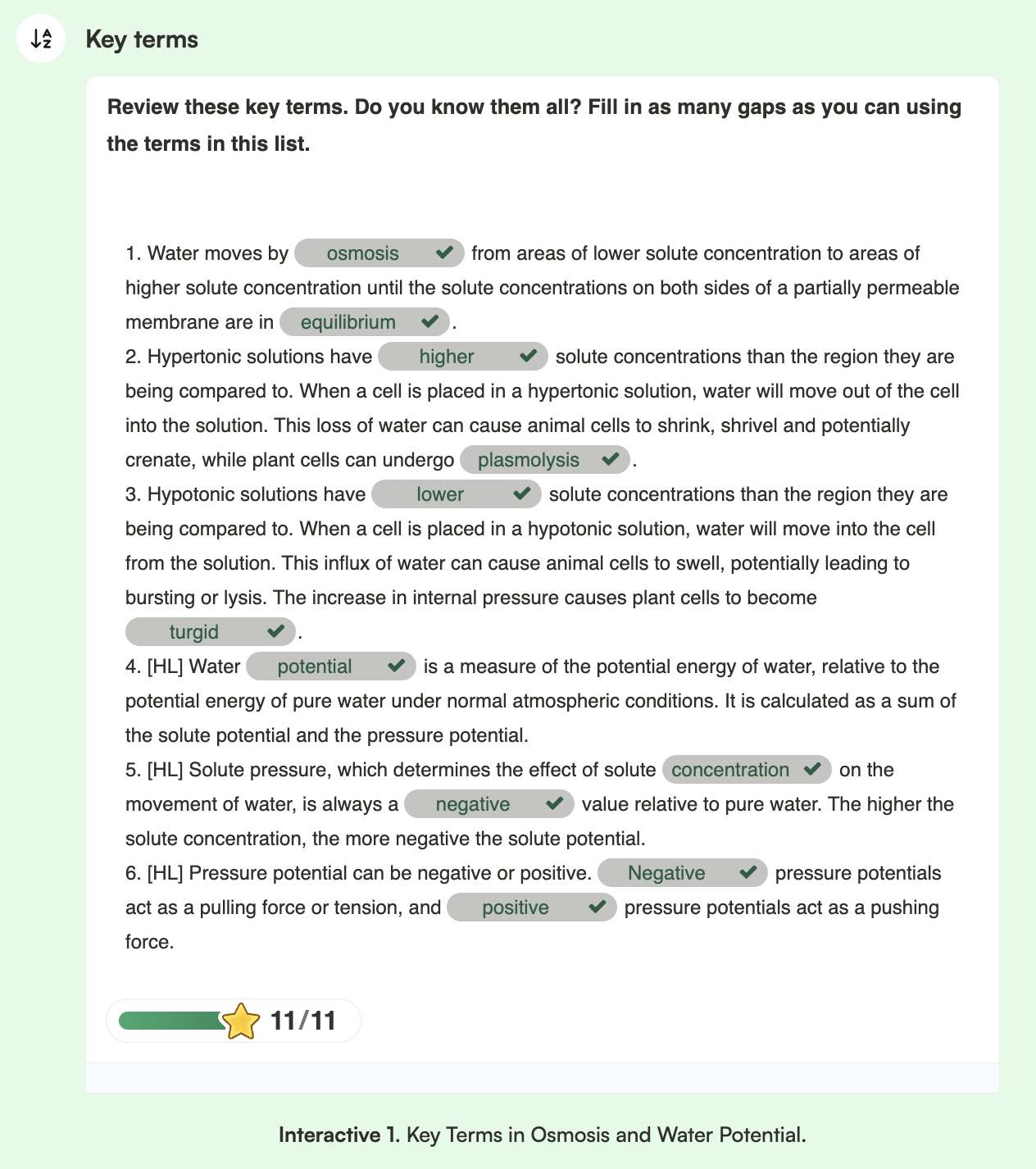
Osmosis and Water Movement
Water is dipolar, so it can dissolve many substances.
Osmosis is when water moves from an area of low solute (hypotonic) to high solute (hypertonic), until both sides are equal (isotonic).
Effects on Cells
In a hypertonic solution (more solutes outside):
Water leaves the cell.
Animal cells shrink and crenate.
Plant cells undergo plasmolysis (membrane pulls away from wall).
In a hypotonic solution (more solutes inside the cell):
Water enters the cell.
Animal cells swell and may burst (lysis).
Plant cells become turgid (full and firm) due to their cell wall.
In an isotonic solution:
Water moves in and out equally—no net change.
Important for medical uses like IV fluids and organ storage to avoid harming cells.
Practical Use
Changes in plant mass or length in different solutions can help find the isotonic point of plant cells.
3- Organisms: Reproduction, inheritance, and homeostasis
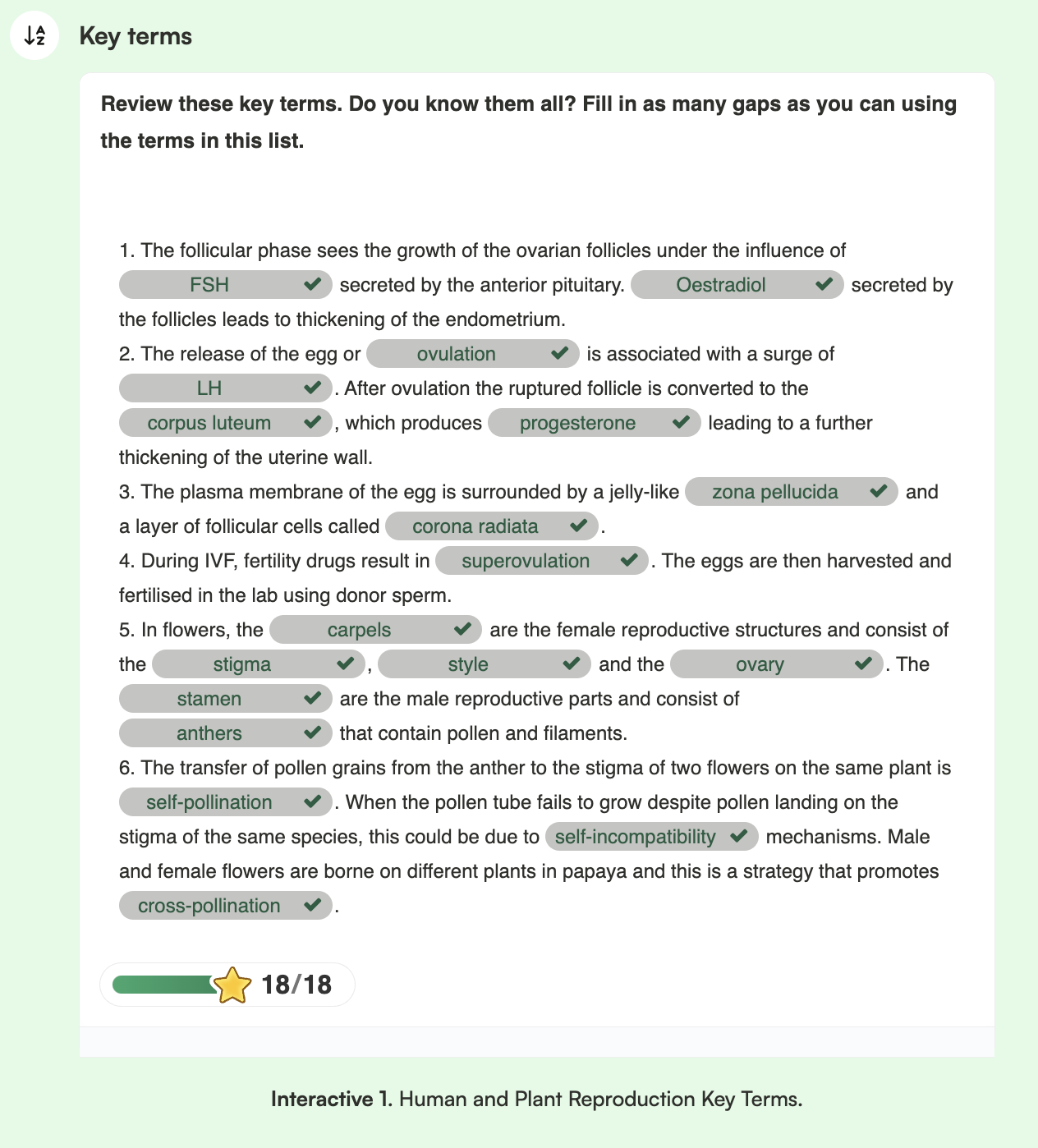
Sexual Reproduction and Variation
Sexual reproduction creates genetic variation, which helps species adapt to changing environments. This variation happens during meiosis (when gametes form) and fertilisation (when they combine).
Gametes
Sperm: small, can move, made in large numbers.
Egg: large, doesn’t move, made in smaller numbers.
Menstrual Cycle
A monthly cycle that prepares the body for pregnancy. It involves:
Ovarian hormones (like oestradiol and progesterone)
Pituitary hormones (like LH and FSH)
Fertilisation
Happens in the fallopian tube and restores the full (diploid) set of chromosomes.
In Flowering Plants
Male gamete: in pollen.
Female gamete: in the ovule.
Pollination brings pollen to the ovule, either by the same plant (self) or another (cross).
Cross-pollination is preferred as it increases genetic diversity.
After fertilisation: seed dispersal and germination follow.
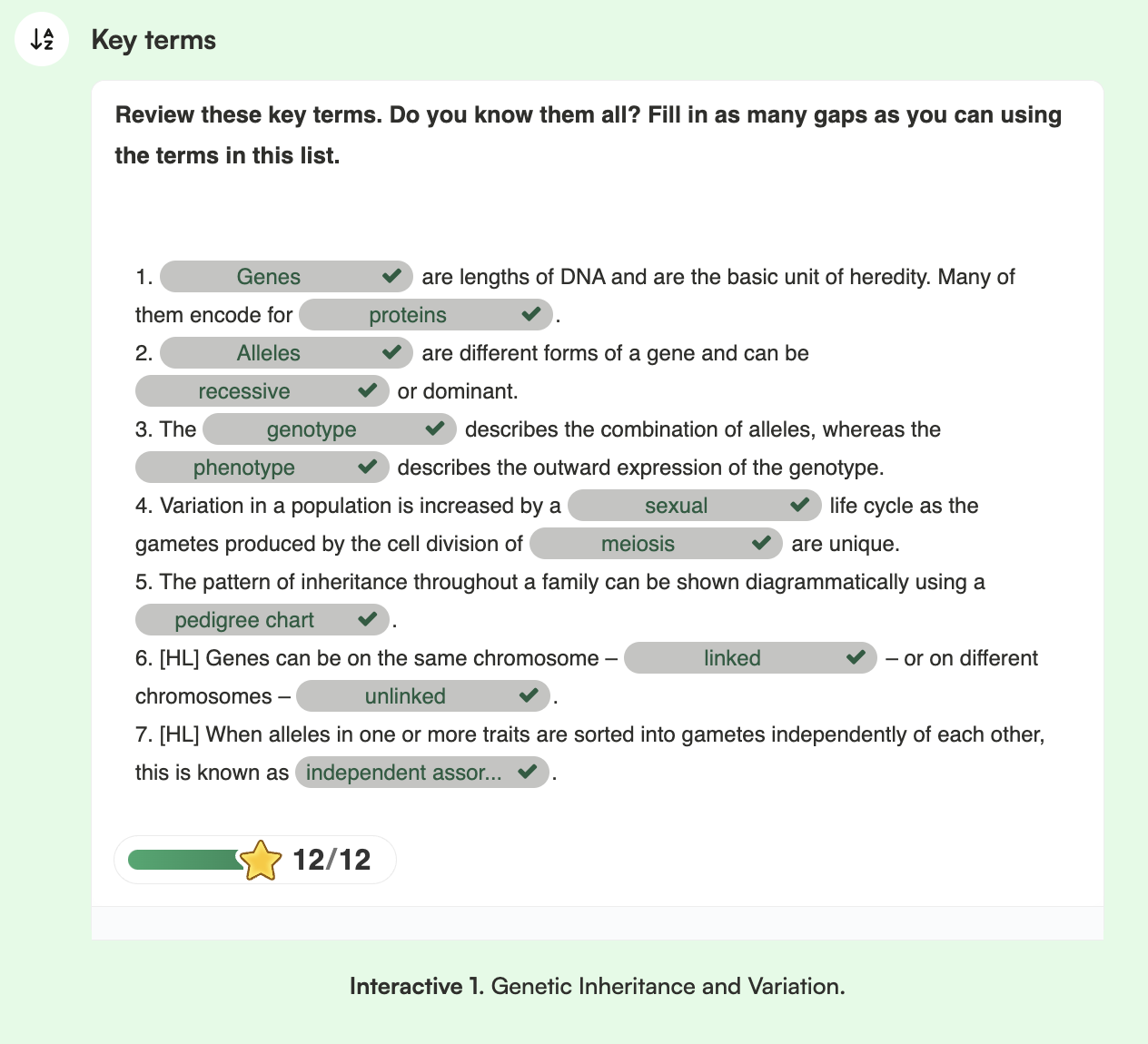
Eukaryotic organisms reproduce sexually, combining unique male and female gametes. This increases variation in a population.
Mendel was the first to describe "units of inheritance" (now called genes) and could predict how traits are passed on.
Monohybrid inheritance involves one gene and one trait. Dihybrid inheritance involves two genes and two traits. Polygenic inheritance is when many genes affect a single trait.
Different versions of a gene are called alleles. Alleles can be dominant, recessive, codominant, or incompletely dominant. The allele combination is the genotype, which determines the phenotype (physical traits).
The phenotype can also be affected by the environment.
Some genes have more than two alleles—this is called multiple alleles. Small DNA changes across a population are called SNPs (single nucleotide polymorphisms).
Sex is determined by the father's chromosome. Some conditions are linked to genes on the X chromosome, so males are more likely to inherit them.
Pedigree charts show how traits are inherited in families.
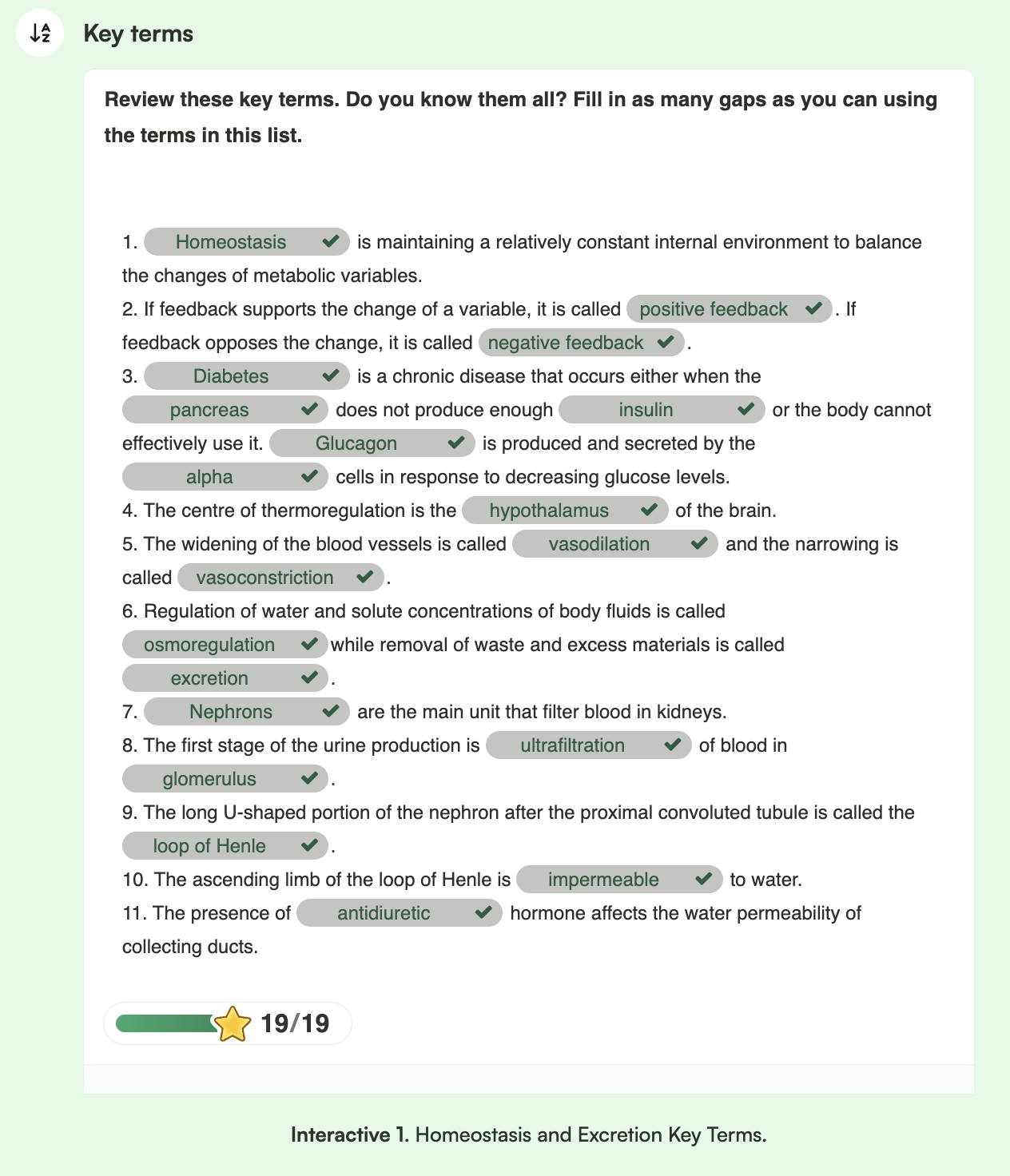
Homeostasis means keeping the inside of the body stable. In humans, this includes things like body temperature, blood pH, blood sugar, and water balance.
Negative feedback helps keep these factors within a healthy range.
Blood sugar is controlled by two hormones from the pancreas:
Insulin lowers blood sugar.
Glucagon raises it.
If the body doesn’t respond to insulin properly or doesn’t make enough, it can cause high blood sugar—this is called diabetes.
Body temperature is controlled by the hypothalamus, which uses signals from temperature sensors in the skin.
To warm up, the body can:
Increase metabolism with thyroxine
Shiver (muscle activity makes heat)
Raise body hair
Narrow blood vessels (vasoconstriction)
Use brown fat to produce heat
To cool down, the body can:
Sweat
Flatten body hair
Widen blood vessels (vasodilation)
4- Ecosystems: Natural Selection, Stability and Change, and Climate Change
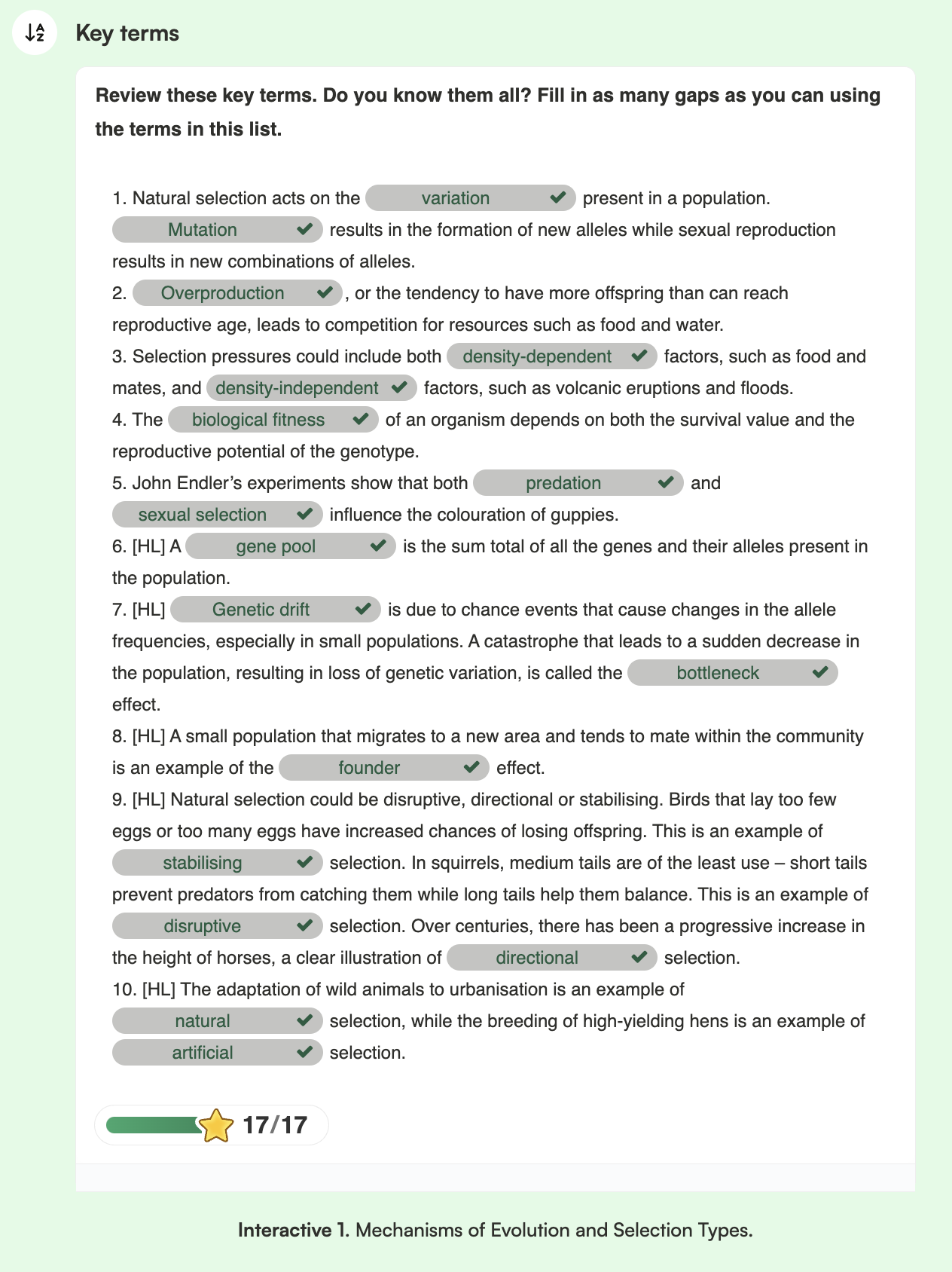
Natural selection acts on differences (variations) caused by mutations and sexual reproduction. Over time, this leads to evolution and creates the diverse life we see on Earth.
When organisms produce too many offspring, they compete for limited resources. This creates selection pressure, where only the best-suited individuals survive and reproduce. Environmental factors (like climate or disasters) also influence this.
An organism's biological fitness depends on how well its genotype helps it survive and reproduce.
Only traits that are inherited (passed through genes) go to the next generation.
Sexual selection is a type of natural selection where mates are chosen based on certain traits. John Endler’s guppy experiments showed how both natural and sexual selection can shape a population.
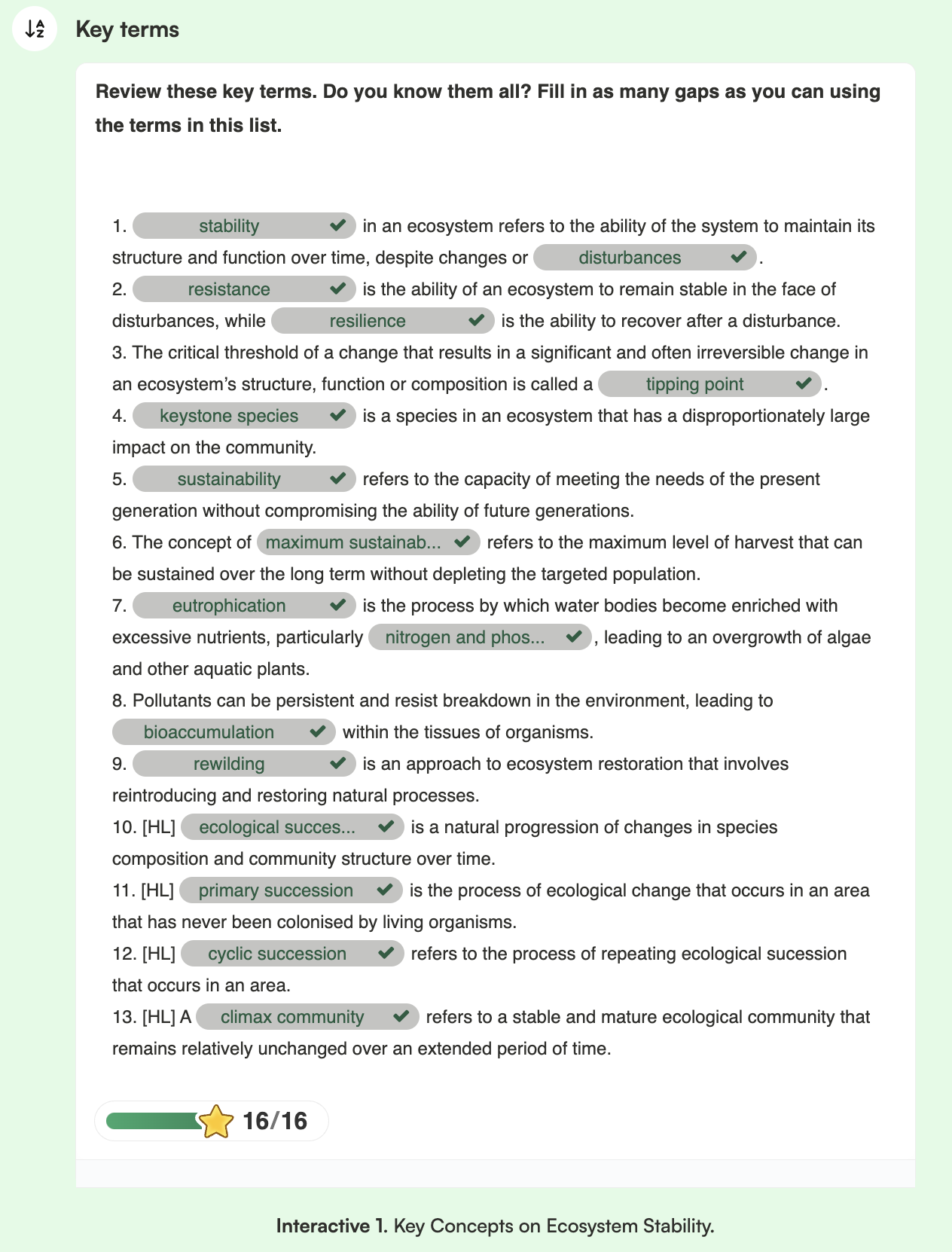
Ecosystem stability means an ecosystem can keep working properly over time, even when things change.
Tropical rainforests like the Amazon, Congo, and Southeast Asia have stayed stable for a long time.
Stability depends on resistance (staying steady during disturbance) and resilience (bouncing back after disturbance).
A wide variety of producers helps ecosystems stay stable by supporting food webs.
Nutrients need to be recycled; losing them can harm the ecosystem.
Genetic diversity helps ecosystems recover better from change.
Climate, land features, and water also affect stability.
A tipping point is when too much change causes a big and often permanent shift in an ecosystem.
For example, deforestation in the Amazon may have already passed this point.
Models help scientists understand and predict complex ecosystems by simplifying them.
Keystone species are animals or plants that have a big effect on the ecosystem’s balance.
Sustainability means meeting today’s needs without hurting future generations.
In farming, sustainable practices protect the environment, use resources wisely, and support communities.
Eutrophication happens when too many nutrients (like nitrogen and phosphorus) enter water, causing algae to overgrow and harm the ecosystem.
Pollutants can build up in organisms and become more concentrated up the food chain—this is called biomagnification.
Plastics reach the ocean through littering, runoff, and human activities like shipping and fishing.
Rewilding is restoring damaged ecosystems by bringing back natural processes and wildlife.
Ecological succession is the natural change in an ecosystem over time:
Primary succession starts in lifeless areas (like lava flows or glaciers).
Secondary succession happens in areas where life was disturbed (like after a fire or flood).
A climax community is a stable, long-lasting ecosystem that forms at the end of succession.
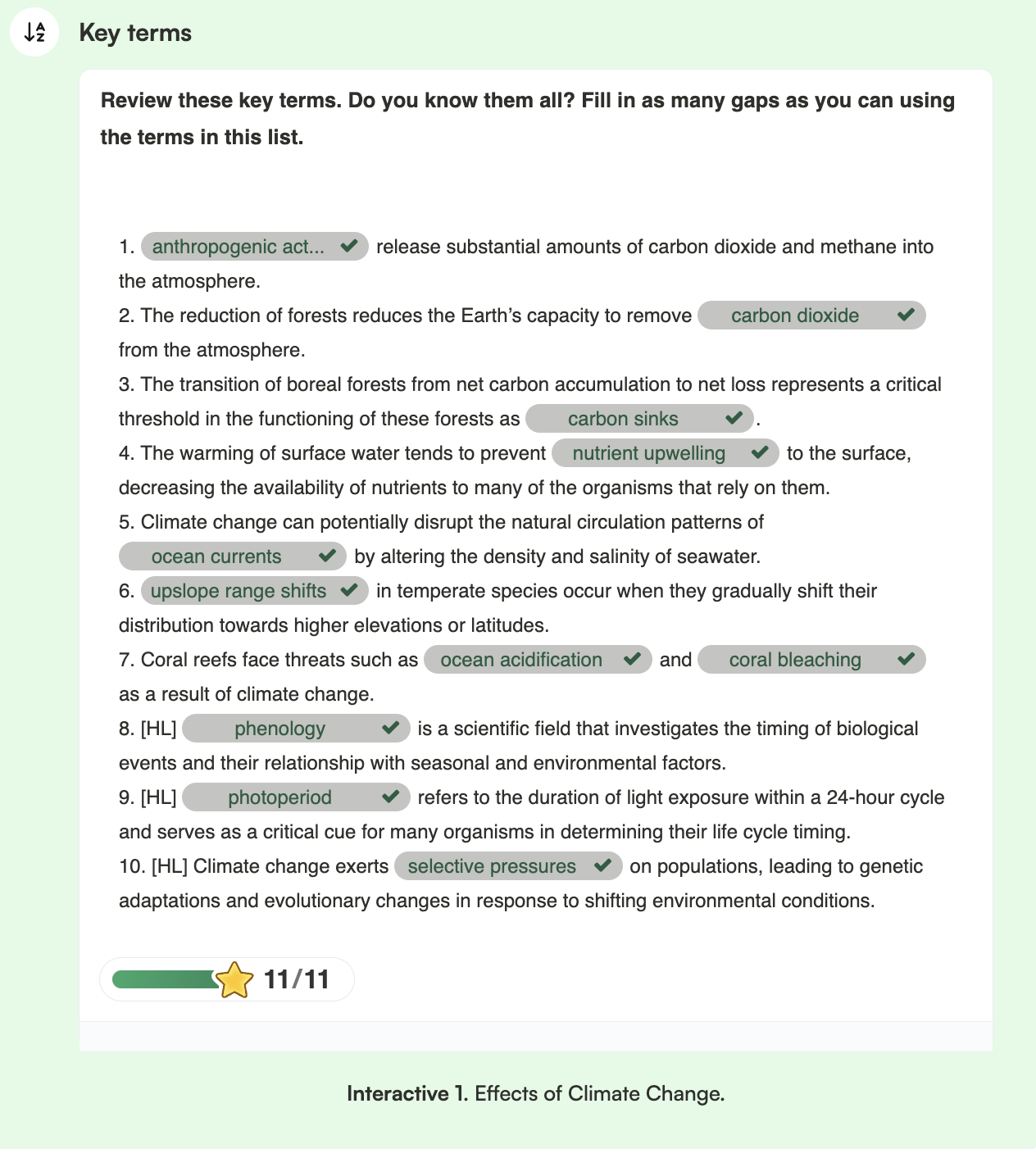
Human Impact on Climate Change
Burning fossil fuels increases CO₂ and CH₄, which trap more heat and worsen the greenhouse effect.
Positive Feedback Loops
Warming causes peat to decompose and permafrost to melt, releasing more greenhouse gases, which speeds up global warming.
Tipping Points
Small changes can trigger big, irreversible shifts—like boreal forests starting to release more carbon than they store.
Ecosystem Impacts
Melting polar ice threatens animals like emperor penguins and walruses that need ice for breeding and resting.
Ocean currents may shift, changing how heat and nutrients move around the oceans.
Less nutrient upwelling (due to warmer surface water) reduces food for phytoplankton, harming marine food webs.
Coral Reefs
Ocean acidification and rising temperatures can kill corals, putting entire reef ecosystems at risk.
Carbon Sequestration
Ways to capture and store CO₂ include planting forests (afforestation) and restoring wetlands.